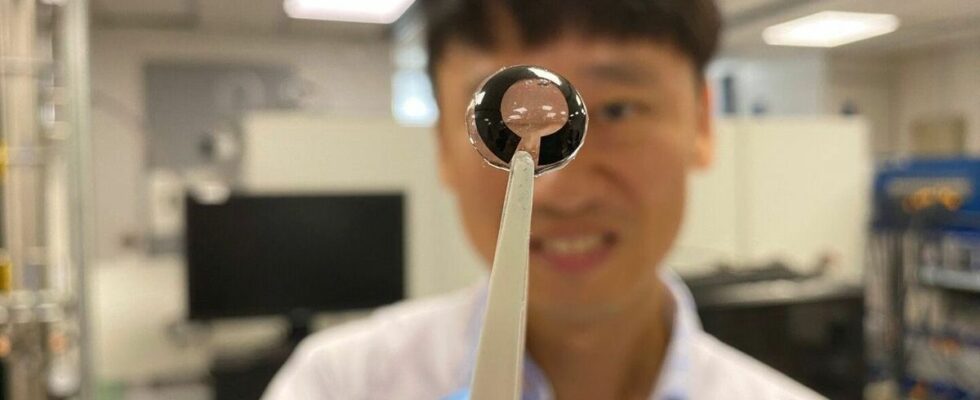Published on
Updated
Reading 1 min.
Scientists at Nanyang Technological University (NTU) in Singapore have developed a flexible battery as thin as a human cornea. Even stronger, a saline solution, identical to our own tears, is capable of supplying energy to this discovery, an essential element of future intelligent contact lenses.
The goal of smart contact lenses is to be able to display visible information on our cornea and access augmented reality. Today made primarily for therapeutic purposes, tomorrow they could be used as sources of information, games or even capture of images stored remotely.
But for this dream to come to life, this lens must be equipped with a relatively durable battery. This is where the work of Nanyang Technological University comes into play. A team has been working for several months on a battery that would be recharged using tear fluid, composed of water and salts.
By laboratory testing their prototype battery with a solution of simulated tears, the researchers showed that battery life would be extended by approximately one hour for every twelve hours of use. It goes without saying that the lens battery can also be recharged conventionally, using an external power supply. This technology could today have a lifespan of around 200 cycles.
This one-of-a-kind battery, approximately 0.2 millimeters thick, is actually made of biocompatible materials. It therefore does not contain wires or toxic heavy metals, as is the case in lithium-ion batteries or wireless charging systems. Its coating is based on glucose and reacts with the sodium and potassium ions contained in the saline solution.
A first patent was filed and the results of their studies published in the scientific journal Nano Energy.
A few years ago, still at Nanyang Technological University, it was demonstrated that a new generation of batteries for portable devices could be powered by the wearer’s own perspiration. Again, this solution contained no toxic chemicals or heavy metals.
